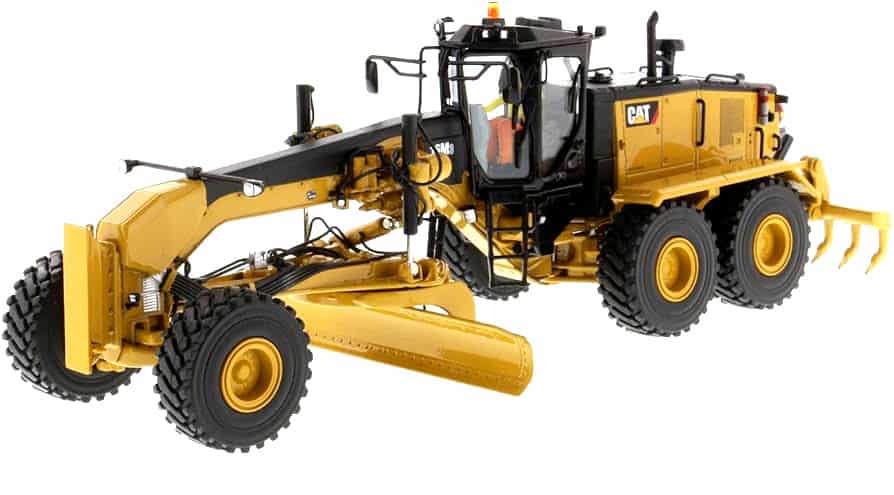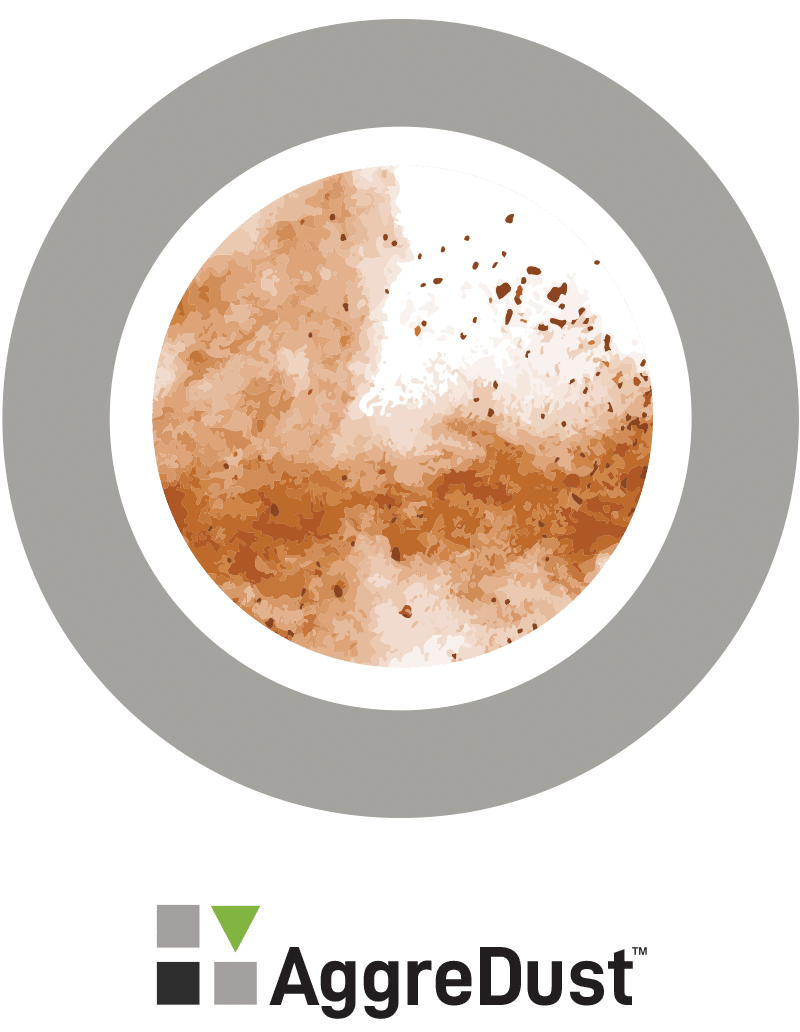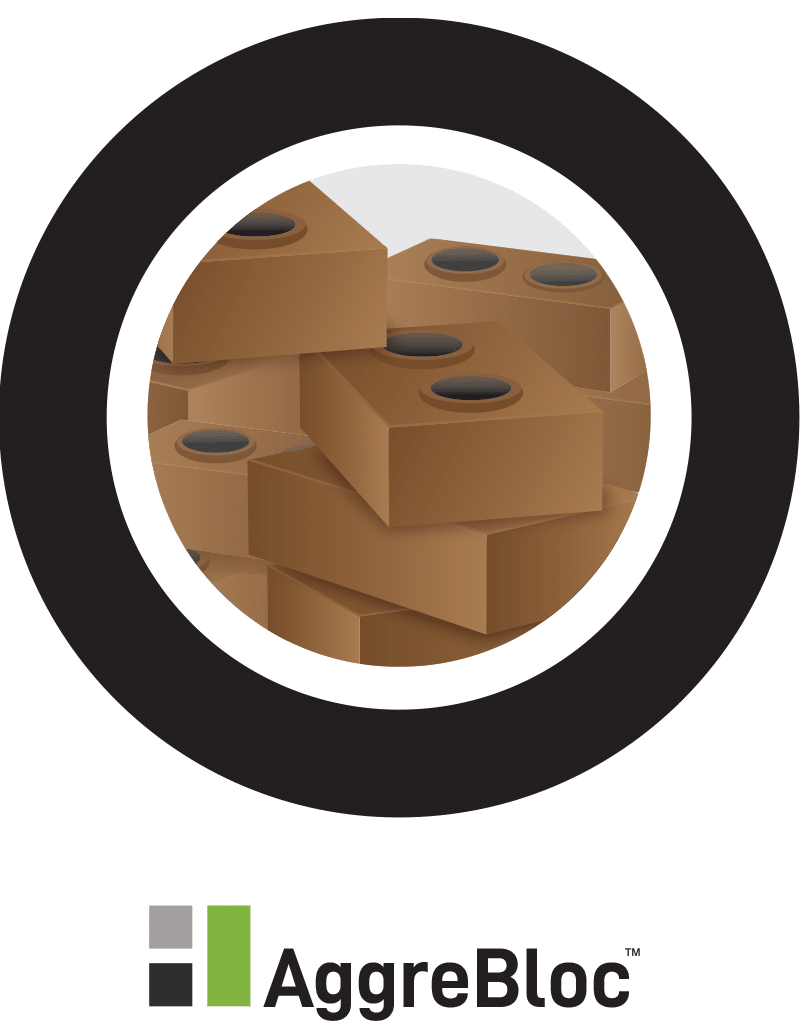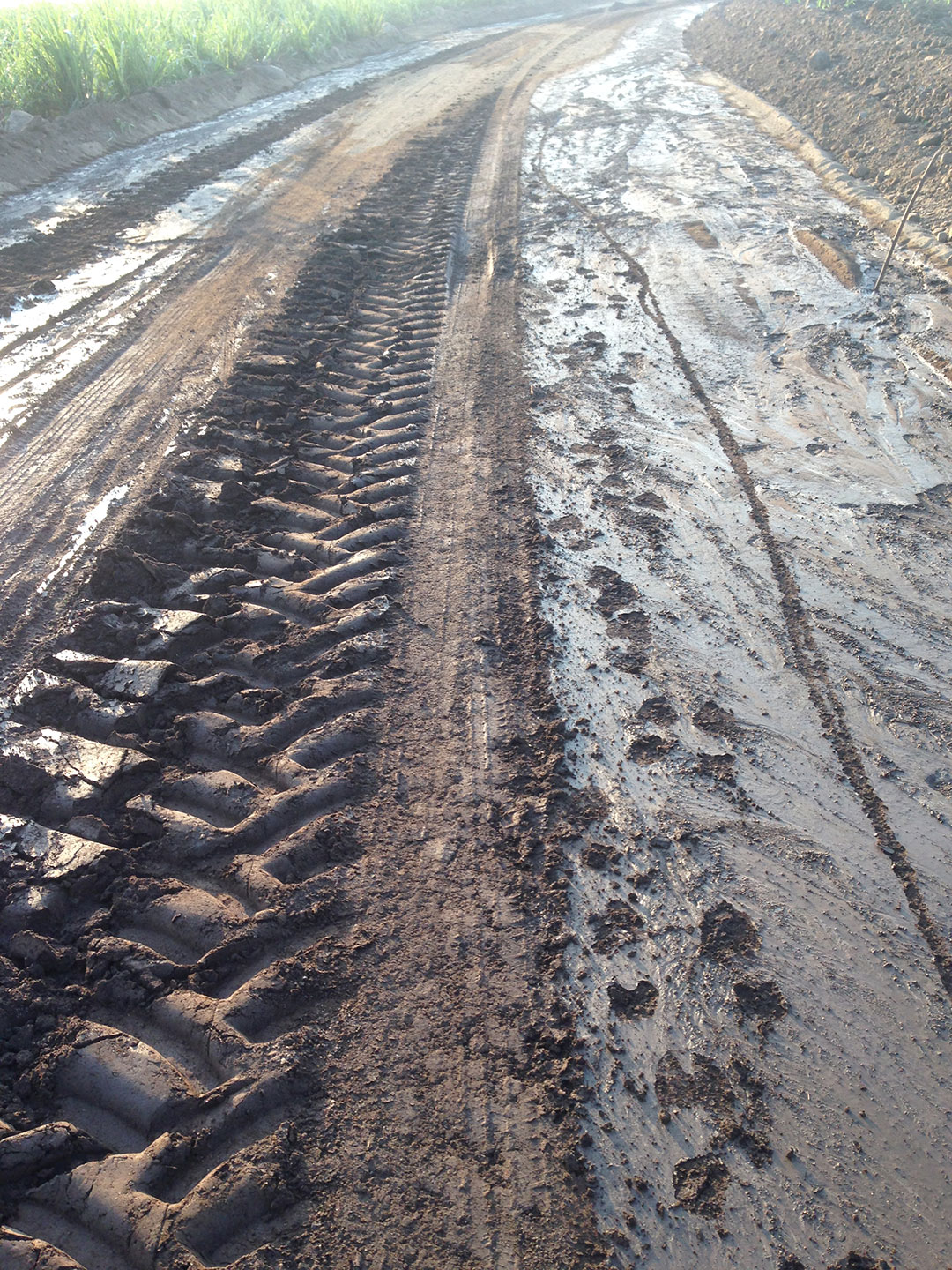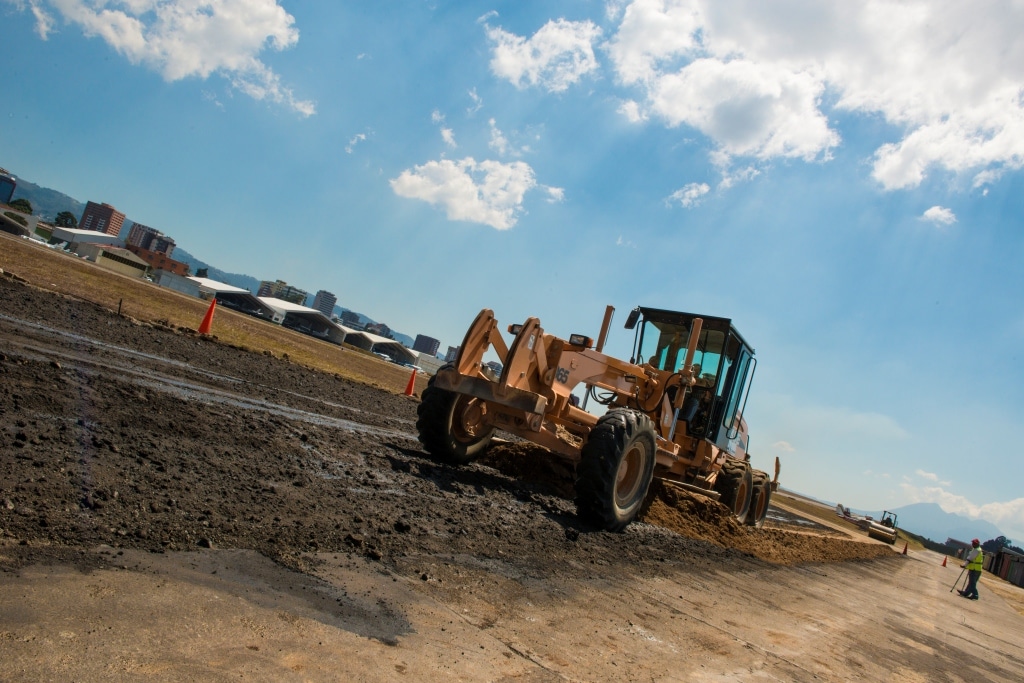Soil Stabilization for Roads, Dust Control, Renewables, Construction, Agriculture and Mining
The sustainable, strong, water-resistant and low-cost choice
for large and small projects
Enhance Soil Strength And Durability With Soil Stabilization
Soil stabilization is the process of improving the strength and durability of soil by adding materials or altering its physical or chemical properties. This is done to enhance the load-bearing capacity and reduce soil erosion. Soil stabilization is commonly used in construction, mining, civil engineering, real estate developments and agriculture to create a stable foundation for structures or to prevent soil erosion in fields and other areas with high soil erosion potential or inadequate load-bearing strength. The process of soil stabilization involves various techniques, including the addition of binders such as AggreBind, which can help bind soil particles together and create a more stable and durable soil structure.
Environmental And Health Benefits Of Soil Stabilization
In a world grappling with the pressing challenges of climate change and environmental degradation, AggreBind stands tall as a beacon of innovation and progress. Our patented technology offers change and alternative to conventional methods, providing a low-cost, environmentally friendly solution for road building, construction, the mining and oil industries and the renewables sector. AggreBind products are designed to empower industries to reduce their carbon footprint and environmental impact, while also enhancing performance and reducing costs. With almost two decades implementing road builds, road repairs, dust solutions and providing building materials globally, AggreBind is the innovator in soil stabilization technology.
At AggreBind, we are driven by a deep commitment to bringing about positive change and sustainable construction.
Optimizing Soil Stability With AggreBind Technology
AggreBind’s patented technology is a soil stabilizer that works by binding soil particles together to create a more stable and durable soil structure. AggreBind is a highly concentrated liquid copolymer that is diluted with water and then applied to the soil surface. When applied, it penetrates the soil to coat the particulates of the mass and binds the soil particles together, creating a strong, sustainable, stable, and long lasting base and surface with affordability. Because of AggreBind’s versatility it can be deployed in numerous locations, from urban zones to remote regions.
AggreBind works through a chemical process known as cross-linking. The long-string polymer molecules in AggreBind form chemical bonds that encapsulate the soil particles, creating a strong and durable network. This network helps to improve soil stability, reduce soil erosion, and enhance load-bearing capacity.
AggreBind is a versatile soil stabilizer that can be used in a wide range of applications, including road construction, dust control, building foundations, erosion control, agricultural soil stabilization, moisture management and more. It is an eco-friendly and long-lasting alternative to traditional stabilizers such as cement, lime, and organic stabilizers. AggreBind is non-toxic, non-polluting and does not harm the environment.
What are the Benefits of Using AggreBind Products for Soil Stabilization
There are many benefits of using AggreBind for soil stabilization, including:

Enhanced strength:
AggreBind improves the stability of soil by binding soil particles together, creating a strong and durable surface. The typical increase in load-bearing strength (CBR) is 400% to 600% based on independent laboratory testing. (Test results are available upon request.)

Reduced maintenance:
Stabilized soil with AggreBind requires less maintenance than un-stabilized soil, as it is more durable and resistant to dust and erosion.

Increased load-bearing capacity:
The stabilized soil can support heavier loads, making it ideal for use in construction, road building, air strips, real estate developments and other heavy-duty applications. Furthermore, introducing AggreBind can eliminate the need for importing materials such as aggregate.

Environmentally friendly:
AggreBind is a non-toxic, eco-friendly solution that does not harm the environment or wildlife.

Dust Control
AggreBind effectively binds soil particles, significantly reducing dust generation during construction, creating a safer and healthier work environment for workers while minimizing dust pollution in surrounding communities and agriculture.

Cost-effective:
AggreBind is a cost-effective solution for soil stabilization compared to traditional stabilizers like cement and lime, as it requires less material and labour and can be implemented in a fraction of the time.

Easy to apply:
AggreBind is easy to apply and can be used with typical road building equipment such as motor-grader, water truck and vibro-compactor; making it a convenient solution for soil stabilization projects.

Moisture management:
AggreBind’s unique ability to bind soil particles togethers prevents dusting in dry season, and muddiness during rainy season and spring thaws.

Improved erosion control:
AggreBind reduces soil erosion by strengthening the soil surface and reducing the effects of weathering, moisture loss and erosion.
Explore AggreBind’s Soil Stabilization Video Resources
AggreBind: The Smarter Choice for soil stabilization
Soil Stabilized Alleys & Sidewalks – Togo
Port Spark KSA
Morocco
DoT KSA
Nepal National Hwy
Mato Grosso, Brazil
Private Road, Connecticut
Chip Seal repair, New Zealand
Parking Area using Stainless Steel Slag
Common Questions (FAQs) About AggreBind Products
Can AggreBind Be Used For All Types Of Soil – Compatibility And Applications?
AggreBind can be used for a wide variety of soils, including sandy, silty, clay, and even contaminated soils. AggreBind does not require cohesive soils to be effective. AggreBind works by bonding the soil particles together, creating a strong soil matrix and durable surface that is resistant to erosion and can support heavier loads.
The effectiveness of AggreBind on a particular soil type depends on several factors, including the soil’s composition. AggreBind does work with most soils. A soil analysis is always recommended.
It is important to note that AggreBind should be used in conjunction with proper soil preparation, dosing and homogenizing of admixture, grading and profiling, then surface sealing. A review of the soil analysis will ensure the best outcome for your specific soil type.
AggreBind is a versatile soil stabilizer that can be used for a wide variety of soil types, again, proper soil preparation and application is critical for achieving optimal results. AggreBind does offer technical support, be it virtual or in person.
Durability And Longevity Of AggreBind Roads And Projects
AggreBind can last for several years or even decades when applied properly and need minimal maintenance. The thickness of the AggreBind layer will vary depending on the weight of the vehicles, 15cm / 6in can support the top-down load of a 40 ton truck.
Is AggreBind Bio-Degradable?
No. AggreBind is long-lasting. A completely biodegradable road would quickly break down and deteriorate, becoming unsafe and unusable. Biodegradable roads frequently become slippery in heavy rain. Additionally, biodegradable materials may release harmful chemicals or pollutants as they break down, which could be harmful to the environment. AggreBind products are not biodegradable. AggreBind is non-toxic, non-polluting, non-hazardous and friendly to the environment as it encapsulates the particles and will not leach into the surrounding soils. AggreBind is designed to be a long-lasting solution. By their nature, roads need to be durable and able to withstand the weight of vehicles and the elements. Even if partially biodegradable, a road may not be as durable and could potentially deteriorate more quickly, leading to safety hazards for drivers and increased maintenance costs. AggreBind roads are safe, long lasting and environmentally friendly.
Case Studies To Demonstrate The Effectiveness Of Soil Stabilization With AggreBind
Absolutely, for projects where we are able to document, we create video case studies here on our website product pages and our YouTube channel. Case Studies are available upon request.
I’ve seen soil stabilizers fail; how is AggreBind different?
There are several products on the market that call themselves‘ soil stabilizers’ offering little or no increase in load-bearing strength. These products mislead with pretty pictures instead of providing technical information and independent test results. Soil stabilization is a very misused term. Where there have been stabilized soil projects that failed or did not perform as promised and represented, it is typically due to these reasons:
- Some of the products simply neutralize the interaction between clay particles to allow the platelets to be compacted with no true binding or soil stabilization action.
- Some soil-binders do not work with non-cohesive materials such as sand.
- Some soil stabilizers improve the CBR by only 2-3 times. (Any surfactant or conventional soap product can do this.)
- Some products require medium to high clay content for stabilizing, essentially lubricating the clay to bind when compacted. (Sometimes they call this increasing plasticity and to do so they say add clay. In fact, they are actually clay-based soil stabilizers.)
- Some soil stabilizer products are based on tree resins, presenting themselves as “ionic stabilizers” and a “green” alternative to bitumen, etc. This class of resin-based soil stabilizer generally needs a minimum of 15% clay content and an annual maintenance program or topping-up of the surface. (Their claim is to be bio-degradable. A bio-degradable road is guaranteed to breakdown rapidly.) These various alternatives cause confusion and doubt in the marketplace.
These assumptions, based on poor experiences with so called soil stabilizers, create misconceptions about AggreBind science-backed and patented technology.
Join Us In Shaping The Future
With AggreBind Solutions
Subscribe To Receive Our Project News
